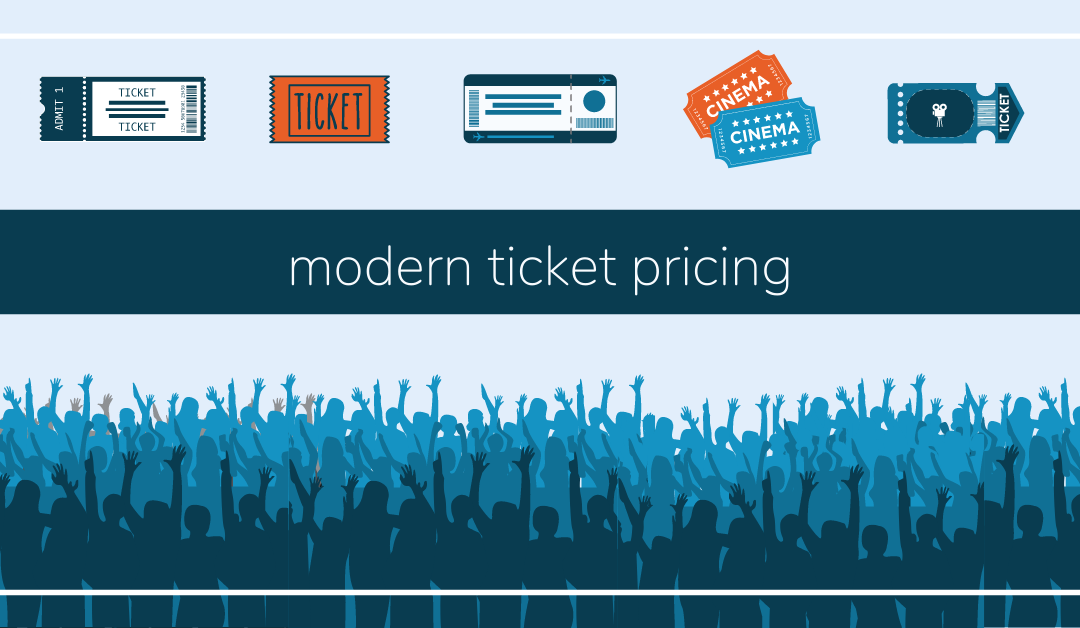Our mission at th!nkpricing is to make sure you have the latest knowledge on how pricing can help your business improve. In this series we want to look at why pricing is so important, how changing your product classification and pricing can help you locate new revenue, and how the tools and knowledge we provide at th!nkpricing can help you on your pricing journey. In our first piece we take a look at how modern ticket pricing is typically done and identify some of the shortcomings.
pricing first
Pricing is a core feature of any business and is a cost free lever for increasing revenue as well as adjusting to market conditions. But while most businesses know they should manage their prices, they lack the know-how and tools to create a successful pricing model. Even if they have the desire to change prices, whether it’s a strategic or gut-driven change, the process is operationally cumbersome and inflexible. That’s because in modern ticketing, pricing is a function managed in the ticketing system. And while ticketing systems are very good at sales and distribution, their primary focus is not ticket pricing.
price for success
Pricing is a complex and continuous process. While ticketing businesses know that price matters, they often rely on occasional changes driven by emergency circumstances or the gut feel of a single person instead of taking a systematic approach. Businesses also need tools to understand their existing prices and find opportunities if they want to build a pricing process and craft a pricing model. There are not many SaaS pricing tools outside of retail so businesses are often left with expensive consulting services to help them price. But businesses already have the most basic thing needed to create a pricing process and optimize their pricing model, their data. They simply aren’t using it yet.
Transactional sales data is the key to unlocking a businesses pricing potential. As more and more businesses rely on online sales to both increase profit and boost demand they compete for the same customers. More competition means the need for flexible and tailored offerings. To achieve those businesses need to understand what is being sold and to whom. To ensure their offerings are optimized, they need to maximize the potential of future prices and sales and for that they need to understand their data and have the tools to use it.
The ticket pricing features built by ticketing systems grew haphazardly as the needs of their customers changed. Robust pricing features were just not at the top of their priorities. This is even true of newer ticketing systems, CRMS and other sales tools, most of which focus on event management, sales, marketing, financial accounting and ticket distribution. They were never built to give in-depth insights into how and to whom the tickets they distribute are sold or to provide ways to ensure that the products being sold meet the available demand. So if businesses can’t use their ticketing system or other tools to build reliable pricing processes and robust pricing models, what can they do?
what next?
The majority of businesses don’t have the controls they need to manage their prices. Not having tools designed to manage product catalogs and pricing increases a businesses’ risk of missing out on valuable market share. As an example say that a businesses’ clients come from a large variety of localities and with many different income levels. The business may want to provide the maximum number of options to their clients, but their current pricing model only has basic classification. Instead of classifying their products based on purchaser, disposable income, and quality of experience, they are forced to sell generic products that capture only a fraction of the available demand. This provides few options for their end customers resulting in potential buyers being priced out by too high prices, or products being under-priced, resulting in a loss in revenue potential.
To avoid situations like these, businesses should understand their product classification options; this allows them to make ticket pricing decisions based on the best available data. Next, businesses need to understand customer buying patterns and how to best present their products. Lastly they should evaluate whether the pricing options available in their ticketing system or other available pricing tools provide the flexibility needed to maximize sales and products.
up next: What is a ticket? A more detailed definition of tickets and examples of how to classify them for pricing.

